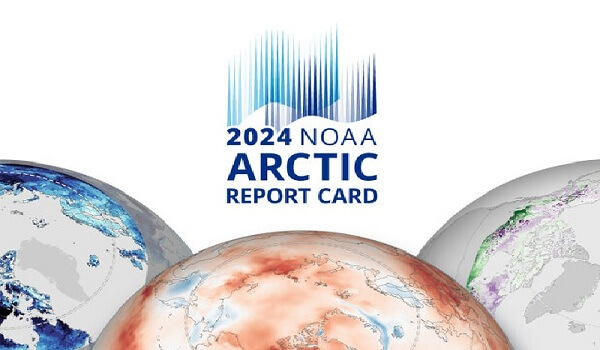A recent report titled the 2024 Arctic Report Card by the National Oceanic and Atmospheric Administration (NOAA) reveals that the Arctic, once a major carbon sink, is now becoming a carbon source due to ongoing climate-induced warming. NOAA, a federal agency of the US, aims to understand and predict environmental changes, manage coastal and marine resources, and support informed decision-making. The Arctic Report Card, issued annually since 2006, provides reliable, and concise environmental information on the Arctic’s current state compared to historical records.
Key Findings of the Report
- Accelerated Arctic Warming: The Arctic is warming at an unprecedented rate, with 2024 marking the second-warmest year since records began in 1900.The Arctic’s summer of 2024 was the third warmest on record, with regions like Alaska and Canada experiencing extreme heat waves.
- Arctic Tundra a Carbon Source: Permafrost thaw is causing the Arctic tundra to switch from a carbon sink to a carbon source. Decomposing permafrost releases carbon dioxide and methane, accelerating global warming. Wildfires are increasing in frequency and intensity, releasing more carbon and extending the wildfire season.
- Decline in Sea Ice: The extent and thickness of sea ice have reduced significantly over the past decades. The shorter sea ice season exposes more dark ocean surfaces, which absorb more heat and further contribute to warming. Arctic glaciers and the Greenland Ice Sheet continue to contribute meltwater to oceans, exacerbating global sea-level rise.
- Implications: Changes in the Arctic contribute to global challenges like coastal flooding, extreme weather events, and wildfires. The Arctic’s diminishing ability to store carbon underscores the need to urgently reduce Greenhouse Gas emissions to mitigate further risks. The reindeer or caribou are in decline due to climate change affecting Indigenous communities reliant on them for food and cultural practices.
Arctic
- About: The Arctic is the northernmost polar region of Earth. It includes the Arctic Ocean, adjacent seas, and parts of Alaska (US), Canada, Finland, Greenland, Iceland, Norway, Russia, and Sweden.
- The Arctic is characterized by its cold climate, with temperatures often dropping below freezing.
- Geopolitical Importance: The Arctic is rich in natural resources, including oil, natural gas, and minerals, attracting significant international interest and competition for control over these resources.
- India’s Interest in Arctic Region: India engaged with the Arctic by signing the Svalbard Treaty in 1920.
- India began its Arctic research program in 2007, and launched its first scientific expedition to the Arctic Ocean and established the Himadri research base in the Svalbard archipelago, Norway in 2008.
- India has held observer status in the Arctic Council since 2013.
- In 2022, the Indian government announced an Arctic policy aimed at engaging in climate research. The National Centre for Polar and Ocean Research will be the nodal agency for its implementation.

